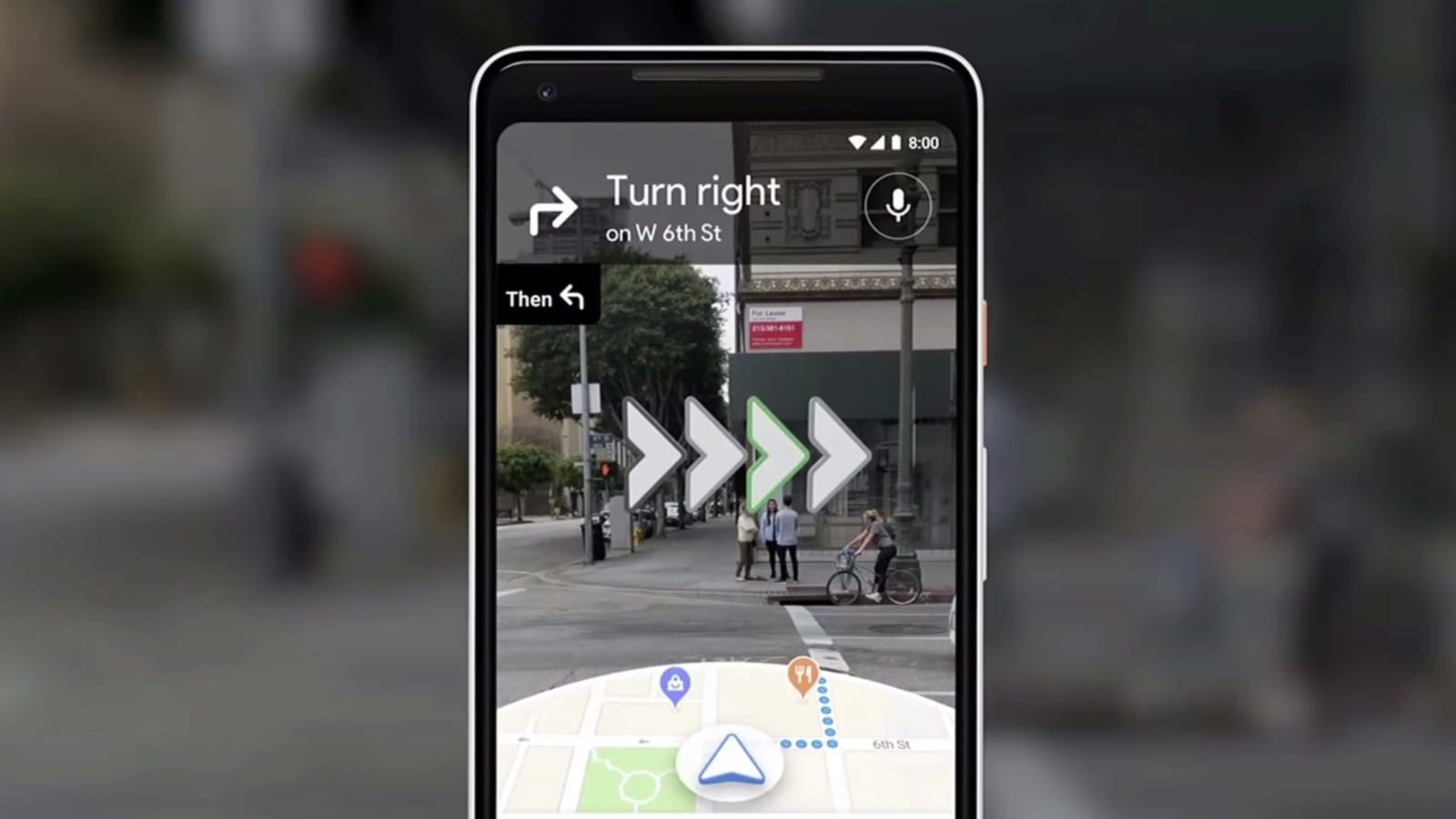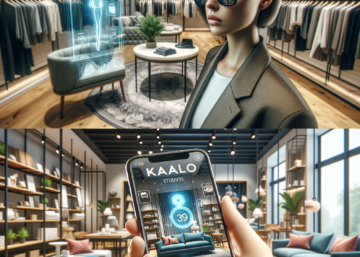Maps have come a long way. Where we used to consult unwieldy paper maps, we now receive step-by-step directions on our smartphones, complete with traffic information. All of these iterations, however, tend to take our attention from what’s in front of us. When walking, it’s an inconvenience; when driving, it’s dangerous. There is a cognitive gap, where information is lost, between looking at directions and turning our attention back to the real-time path. Augmented reality, with directions overlaid onto the road in front of us, can remove this gap and increase efficiency and safety. (more on how our brains process GPS directions)
Augmented Reality Enhances Directions Inside
AR can make finding your way in a large warehouse, shopping mall, or train station easier. In 2021, Google Maps introduced its Live View feature for select areas and buildings. Imagine you’re in the airport and need to find your gate, the nearest coffee or an ATM. The Live View AR feature will overlay step-by-step directions onto your real-time surroundings through your phone’s screen. This same technology can be used to direct warehouse workers to find specific products in vast spaces, saving time and reducing errors. (more on AR uses in warehouse settings)
AR and Outside Walking Directions
Google actually pioneered their Live View AR feature outdoors, in 2019, before taking it to public inside spaces. It overlays large arrows onto your environment through your phone screen making it very difficult to get lost. One journalist tested it, purposely choosing the wrong direction, and found the AR function redirected him just as seamlessly, if not more so, than traditional GPS. Another crowd-sourced project, AED4EU by Lucien Engelen, puts AR walking direction to emergency use. The app can quickly direct you to the nearest AED (automatic external defibrillator) in case of emergency. Users upload AED locations and volunteers physically verify them. (more on AR applications for healthcare)
AR Driving Directions and the Heads-Up Display (HUD)
A heads-up display is just that — a display of information that allows you to keep your eyes on the road ahead as you drive. Several vehicles, such as the Audi Q4 e-tron EV, already offer versions of this AR-driven technology. This kind of AR-driven head-sup display can “overlay the driver’s view of the real world through the windshield with helpful navigation directions, warning signs, and vehicle data.” (Dan Carney, Design News, 2021) Panasonic has also developed an AR HUD predicted to be in cars by 2024. It displays lane edges, objects in the road and other driver information. The Mercedes Benz MBUX aviation system also uses AR to project floating arrows as driving directions. (Roberto Baldwin, Car & Driver 2021)
Augmented reality, as applied to GPS directions, whether walking, biking or driving will reduce error and increase safety and efficiency. Whether you’re looking for bagels at the airport, searching for a sofa in a warehouse or driving to someone’s house in a rainstorm, AR will get you there faster and easier.



